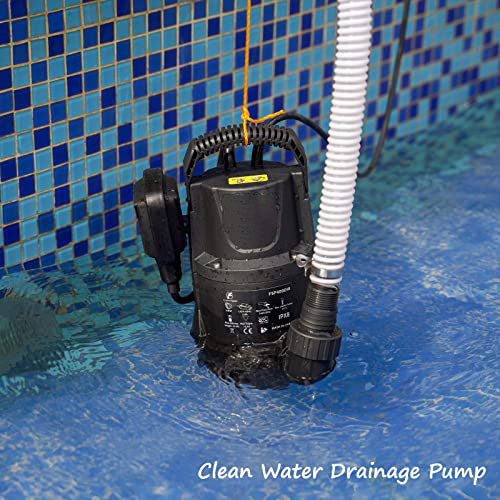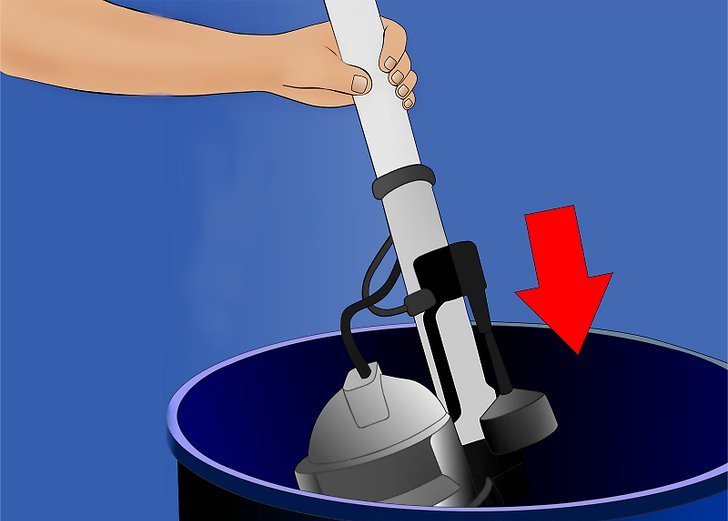Fast Steps to Taking Care of Your Sump Pump
Fast Steps to Taking Care of Your Sump Pump
Blog Article
They are making a number of great annotation regarding Cleaning & Maintenance Tips for Your Home's Sump Pump as a whole in this post down below.

Sump pumps are critical components in many homes, especially in locations susceptible to flooding or extreme wetness. They help protect against water damage by effectively removing excess water from basements or crawl spaces. Nonetheless, like any other appliance, sump pumps need normal upkeep to ensure they work efficiently when needed one of the most. Cleaning your sump pump is an important part of its maintenance, and recognizing how to do it appropriately can conserve you from pricey repairs and possible calamities.
Introduction
Keeping a clean sump pump is essential for its appropriate performance and durability. Ignoring this essential job can bring about clogs, breakdowns, and inevitably, water damage to your residential property. For that reason, learning exactly how to cleanse a sump pump is crucial for home owners that depend on these gadgets to keep their cellars dry and protected.
Indicators of a Dirty Sump Pump
Understanding when your sump pump requires cleaning is crucial for protecting against prospective breakdowns. Some common indications that indicate a filthy sump pump consist of unusual sounds throughout procedure, minimized water circulation, and noticeable debris in the pit. If you observe any of these signs, it's important to clean your sump pump immediately to prevent any further problems.
Preparing for Cleansing
Prior to you start cleaning your sump pump, it's important to take some safety precautions. Begin by turning off the power to the pump to avoid any kind of electric crashes. In addition, put on ideal safety gear, such as handwear covers and safety glasses, to safeguard on your own from dirt, particles, and potential pathogens.
Understanding the Sump Pump
Prior to diving into the cleaning procedure, it's vital to have a fundamental understanding of how a sump pump functions. Commonly set up in a pit or basin listed below the basement flooring, a sump pump consists of numerous essential parts, including a pump, a float button, and a discharge pipeline. When water accumulates in the pit, the float switch turns on the pump, which after that pumps the water out through the discharge pipe, far from the structure's structure.
Step-by-step Guide to Cleaning Up a Sump Pump
Turning off the Power
Begin by separating the power supply to the sump pump to stop any accidents while cleaning.
Looking For Correct Performance
Prior to re-installing the pump, execute a fast examination to make sure that the float button triggers the pump properly. Pour some water into the sump pit and observe the pump's procedure. If everything is operating correctly, you can reassemble the pump and reconnect the power supply.
Eliminating Debris and Dirt
Make use of a container or an inside story to get rid of any kind of noticeable particles, dirt, or sediment from the sump pit. Dispose of the particles effectively to avoid it from clogging the pump or the discharge pipe.
Cleaning the Pump and Drift Switch Over
Once the pit is clear of debris, thoroughly eliminate the pump from the pit. Examine the pump and the float button for any type of indicators of damage or wear. Make use of a soft brush or cloth to clean up the surface areas and remove any type of built up grime.
Flushing the System
After cleansing the pump and float button, flush the sump pit with tidy water to remove any continuing to be dirt or sediment. This will assist make certain that the pump operates smoothly and efficiently.
Maintenance Tips to Keep Your Sump Pump Clean
In addition to regular cleansing, there are a number of upkeep ideas you can comply with to maintain your sump pump in ideal condition:
Verdict
Cleansing your sump pump is a crucial facet of its maintenance and makes sure that it runs efficiently when you need it one of the most. By adhering to the steps detailed in this overview and including routine upkeep right into your routine, you can expand the lifespan of your sump pump and protect your home from water damages.
6 STEPS ON HOW TO CLEAN A SUMP PUMP PROPERLY
UNDERSTANDING SUMP PUMPS
Your sump pump plays a crucial role in protecting your home by managing and removing excess water. It primarily functions as a “shield”, guarding your basement against the damaging effects of water accumulation. The pump is housed in a sump pit in the lowest part of your basement, and its job is to pump out any water that collects there.
During heavy rainfalls or when snow melts rapidly, water can infiltrate your basement, posing potential risks like flooding, structural damage, and harmful mold growth. Here, the sump pump springs into action, pumping out the intruding water and directing it away from your home.
SAFETY FIRST
Before cleaning, remember to prioritize safety. Disconnect the sump pump from the power source to prevent any accidental electric shocks. Also, wear sturdy gloves to protect your hands from any sharp or dirty components within the pump.
REMOVE THE SUMP PUMP
After ensuring your safety, the next step is to remove the sump pump from its pit. Doing this might require careful maneuvering as you don’t want to damage any pump components. Once removed, clean the sump pit to remove any accumulated debris or sludge.
INSPECT THE PUMP
Inspect the pump for any visible signs of wear or damage. Check the power cord, float switch, and impeller housing. If any components look worn out or damaged, consider replacing them to ensure optimal performance.
CLEAN THE PUMP
Thoroughly clean the pump with warm, soapy water. Make sure to rid it of any dirt, gravel, or other debris that might impede its performance. You can use a toothbrush to clean the small, hard-to-reach parts of the pump.
REINSTALL THE SUMP PUMP
Reinstall the pump into the sump pit Make sure it’s positioned correctly to remove the water effectively Once it’s back in place, reconnect it to the power source TEST THE PUMP
Finally, pour some water into the pit to ensure the pump works correctly. It should start automatically and begin pumping out the water; if it doesn’t, check the power source and the positioning of the pump.
Remember, while cleaning your sump pump is an essential part of home maintenance, hiring a professional plumber for a thorough inspection and cleaning at least once a year is also important. This will ensure that your pump is in optimal condition, ready to protect your home from potential water damage.
BEST PRACTICES FOR CLEANING SUMP PUMP DISCHARGE PIPES
Regular Inspection: Regularly inspect your discharge pipes, especially during heavy rainfall or snowmelt periods. Look for any signs of blockage or damage. Early detection of problems can prevent serious issues down the line. Periodic Cleaning: Over time, sediment and debris can accumulate in the discharge pipes, impeding the flow of water. Regular cleaning helps keep the pipes clear and functioning efficiently. You can use a high-pressure water jet to effectively clean the pipes. Insulation During Winter: In colder climates, discharge pipes can freeze, blocking the outflow of water. Protect your discharge pipes from freezing temperatures by insulating them with foam pipe insulation. This will ensure the sump pump can continue to discharge water even in freezing conditions. Proper Positioning: The discharge pipe should be positioned to direct water away from your home’s foundation. Improper positioning can lead to water seeping back into the basement. Ensure the pipe is long enough and angled correctly. Installation of a Check Valve: A check valve prevents water from flowing back into your sump pit after the pump has pushed it out. Installing a check valve helps maintain the efficiency of your sump pump and reduces the risk of flooding. Minimize Pipe Turns: Every curve or turn in the discharge pipe can decrease the efficiency of water flow. By minimizing turns and bends in your discharge pipe, you can increase the efficiency of your sump pump. https://www.fullspeedplumbing.com/how-to-clean-a-sump-pump-properly9999/

Do you like more info about Steps to Cleaning Your Sump Pump Properly? Write feedback directly below. We would be delighted to listen to your opinions about this piece. We hope that you come back again soon. Enjoyed reading our blog? Please share it. Let another person locate it. I am grateful for your time. Kindly come visit our site back soon.
Schedule And Pricing Report this page